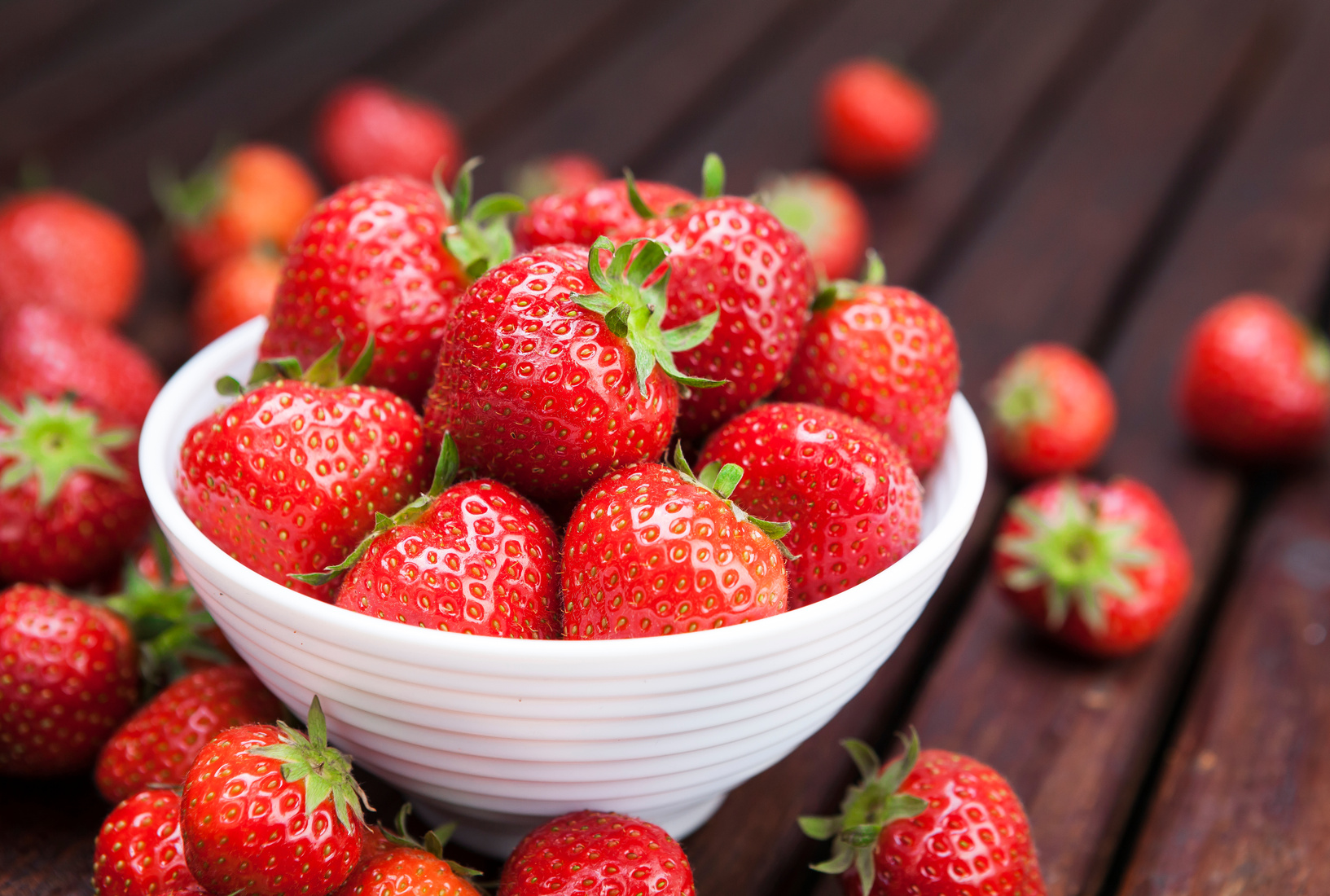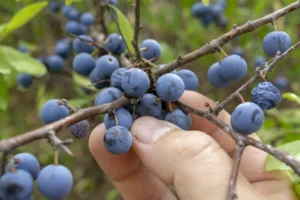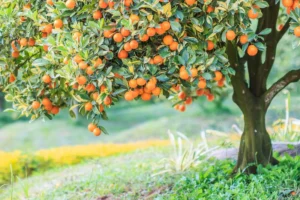How to Grow and Care for Strawberries: A Complete Guide
Growing strawberries at home offers a rewarding experience with delicious results. Whether you have a spacious garden, limited outdoor space, or just a sunny windowsill, you can enjoy these sweet berries with proper care and attention. This comprehensive guide will walk you through everything you need to know about growing and caring for strawberries in various settings.
Understanding Strawberry Varieties
Before planting, it’s important to understand the different types of strawberries available to you.
Types of Strawberries
- June-bearing strawberries: Produce one large crop per year in late spring to early summer
- Everbearing strawberries: Produce two to three harvests throughout the growing season
- Day-neutral strawberries: Produce fruit continuously throughout the growing season when temperatures range between 35-85°F
Popular Varieties for Home Gardens
June-bearing varieties like ‘Earliglow’ and ‘Allstar’ are excellent choices for gardeners who want a concentrated harvest for preserving. Everbearing varieties such as ‘Ozark Beauty’ and ‘Fort Laramie’ provide harvests in spring and fall. Day-neutral varieties like ‘Albion’ and ‘Seascape’ offer steady production throughout the growing season.
Getting Started: Planting Strawberries
You can grow strawberries from seeds, but most gardeners prefer to start with bare-root plants or seedlings for faster results.
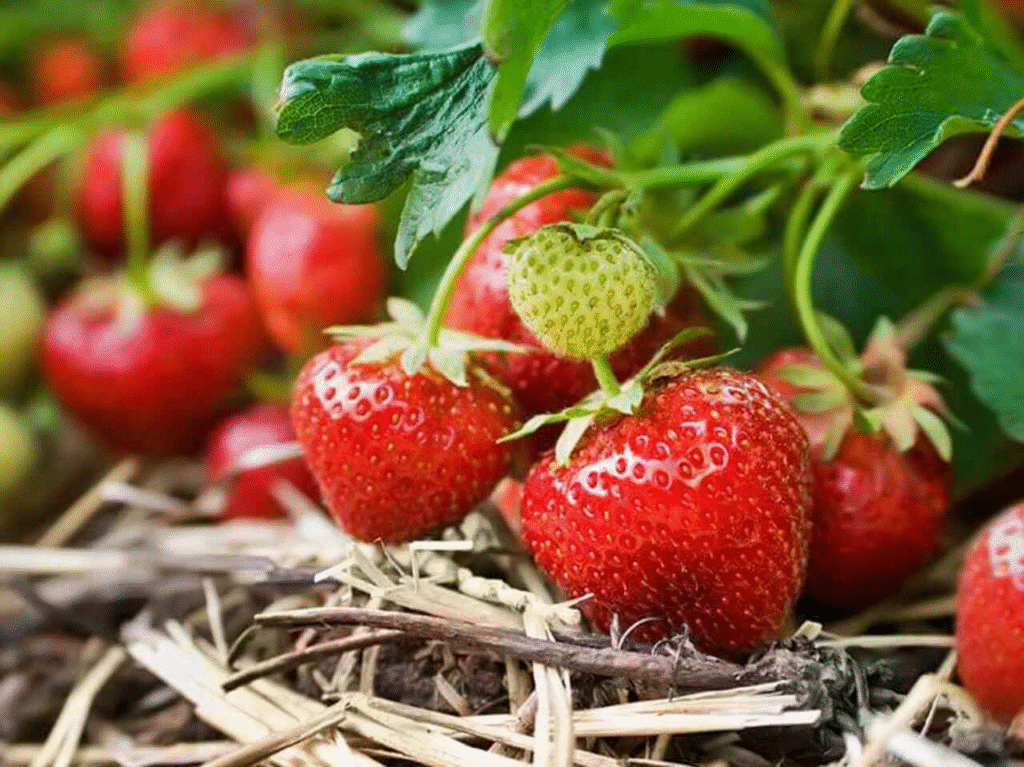
Growing from Seeds
If you’re patient and want to try growing from seeds:
- Start seeds indoors 10-12 weeks before the last frost date
- Use seed-starting mix in small containers
- Sprinkle seeds on the surface (don’t bury them)
- Cover with a thin layer of vermiculite
- Keep soil moist and warm (65-75°F)
- Seeds will germinate in 1-3 weeks
- Transplant seedlings after they develop 2-3 true leaves
Planting Bare-Root Plants or Seedlings
For most gardeners, this is the recommended approach:
- Plant in early spring after danger of frost has passed
- Space plants 12-18 inches apart in rows 3-4 feet apart
- Dig holes deep and wide enough to accommodate the roots
- Create a small mound in the hole and spread roots over it
- Ensure the crown (where stems meet roots) is level with the soil surface
- Water thoroughly after planting
Growing Strawberries in Different Settings
Strawberries are versatile and can be grown in various environments.
Garden Bed Cultivation
When planting in traditional garden beds:
- Choose a sunny location with at least 6-8 hours of direct sunlight
- Ensure soil is well-draining with pH between 5.5-6.8
- Incorporate 2-3 inches of compost before planting
- Consider raised beds to improve drainage and reduce weeds
- Mulch with straw to keep berries clean and prevent diseases
Container Growing
For patios, balconies, or limited space:
- Select containers at least 8-12 inches deep with drainage holes
- Use high-quality potting mix (not garden soil)
- Plant 3-5 plants in a 24-inch container
- Place in full sun
- Water more frequently than garden plants (containers dry out faster)
- Feed with balanced liquid fertilizer every 3-4 weeks
Hanging Baskets
Ideal for small spaces and visual appeal:
- Choose trailing varieties like ‘Ozark Beauty’ or ‘Alexandria’
- Use 12-16 inch baskets with good drainage
- Line baskets with coconut coir to retain moisture
- Use lightweight potting mix
- Plant 3-5 plants per basket
- Hang in full sun position
- Check moisture daily during hot weather
Soil Preparation and Fertilization
Strawberries thrive in nutrient-rich, well-draining soil.
Soil Requirements
- pH level: 5.5-6.8 (slightly acidic)
- Texture: Loamy, well-draining soil
- Organic matter: High in organic content (add compost)
Fertilization Schedule
| Growth Stage | Fertilizer Type | NPK Ratio | Application Rate | Timing |
|---|---|---|---|---|
| Pre-planting | Compost/Organic | Balanced | 2-3 inches worked into soil | Before planting |
| Establishment | Balanced | 10-10-10 | 1 lb per 100 sq ft | 4 weeks after planting |
| Maintenance | Low nitrogen | 5-10-10 | 1 lb per 100 sq ft | Early spring |
| Fruiting | Potassium-rich | 0-0-60 | 1/2 lb per 100 sq ft | As flowers appear |
| Post-harvest | Balanced | 10-10-10 | 1 lb per 100 sq ft | After renovation |
Note: Avoid high-nitrogen fertilizers as they promote leaf growth at the expense of fruit production.
Watering and Maintenance
Proper watering is crucial for strawberry health and fruit production.
Watering Guidelines
- Newly planted: Keep soil consistently moist until established
- Established plants: 1-1.5 inches of water per week
- Container plants: Check daily, water when top inch of soil is dry
- Watering method: Drip irrigation or soaker hoses to keep foliage dry
Mulching
Mulching is essential for strawberry cultivation:
- Suppresses weeds
- Conserves soil moisture
- Keeps fruit clean and prevents rot
- Insulates roots from temperature extremes
Apply 2-3 inches of clean straw, pine needles, or black plastic mulch around plants, keeping it away from the crown to prevent rot.
Pest and Disease Management
Common strawberry pests include slugs, strawberry bud weevils, and spider mites. Diseases like gray mold, powdery mildew, and leaf spot can also affect plants.
For organic management:
- Remove diseased leaves promptly
- Ensure good air circulation between plants
- Avoid overhead watering
- Apply organic pesticides like neem oil for insect control
- Use floating row covers to protect against insects
According to the USDA Agricultural Research Service, proper spacing and sanitation can reduce disease pressure in strawberry plantings by up to 60% (USDA-ARS Strawberry Research).
Harvesting and Renovating Strawberry Beds
Harvesting Tips
- Harvest when berries are fully red (no white or green portions)
- Pick in the morning when temperatures are cool
- Cut or pinch stems just above the berry rather than pulling
- Handle gently to avoid bruising
- Refrigerate immediately after harvesting
- Do not wash until ready to use
Renovating June-Bearing Strawberry Beds
June-bearing varieties benefit from annual renovation:
- After harvest (usually early July), mow or cut foliage to 1-2 inches above crowns
- Narrow rows to 12 inches wide
- Thin plants to 6 inches apart
- Remove older plants (keep younger, more vigorous ones)
- Apply balanced fertilizer
- Water thoroughly
- Apply fresh mulch
Everbearing and day-neutral varieties don’t typically need renovation but should be replaced every 2-3 years as production declines.
Growing Strawberries Year-Round
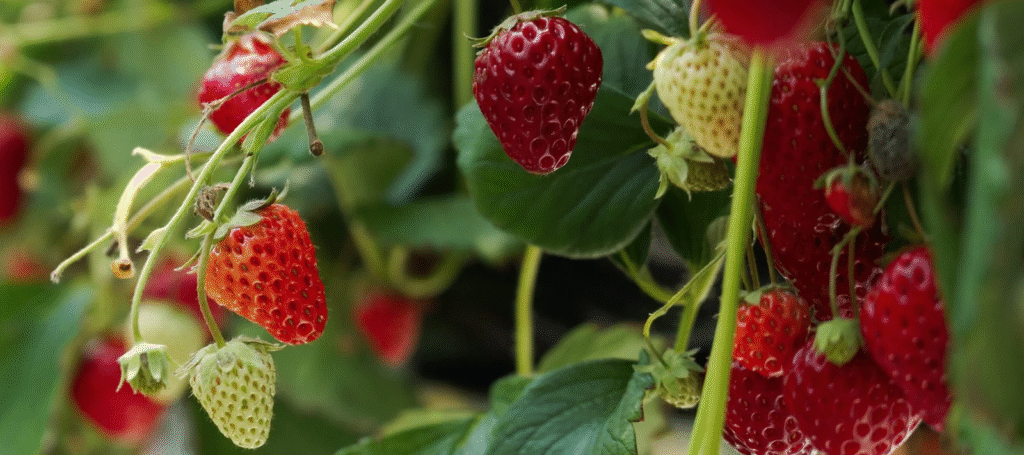
Season Extension Techniques
To enjoy berries for more months of the year:
- Cold frames: Simple structures that protect plants from frost
- Tunnels: Plastic-covered hoops that create mini-greenhouses
- Indoor growing: Under grow lights or in sunny windows
- Succession planting: Start new plants every 3-4 weeks for continuous harvest
Winter Protection
In colder regions (USDA zones 3-6):
- Wait until after the first hard frost (plants need some chill hours)
- Apply 4-6 inches of straw mulch over plants
- In spring, gradually remove mulch as new growth appears
Special Growing Methods
Vertical Strawberry Towers
Maximize space with vertical growing:
- Use PVC pipes with holes cut for plants
- Stack terracotta pots
- Use specialized strawberry planters
- Ensure adequate drainage and regular feeding
Hydroponic Strawberries
For advanced growers:
- Use nutrient film technique (NFT) or deep water culture systems
- Maintain water temperature between 65-75°F
- Use complete hydroponic nutrients formulated for fruiting plants
- Monitor pH (5.5-6.5) and EC (1.0-1.4 mS/cm) regularly
The U.S. Strawberry Market
The United States is one of the world’s leading producers of strawberries, with California accounting for approximately 88% of the country’s production. According to the USDA Economic Research Service, the value of the U.S. strawberry crop exceeds $2.2 billion annually.
For home growers, this means:
- Access to diverse, high-quality varieties developed by U.S. breeding programs
- Availability of specialized growing supplies
- Opportunity to enjoy premium berries at a fraction of store prices
- Support for local ecosystems through sustainable growing practices
Troubleshooting Common Issues
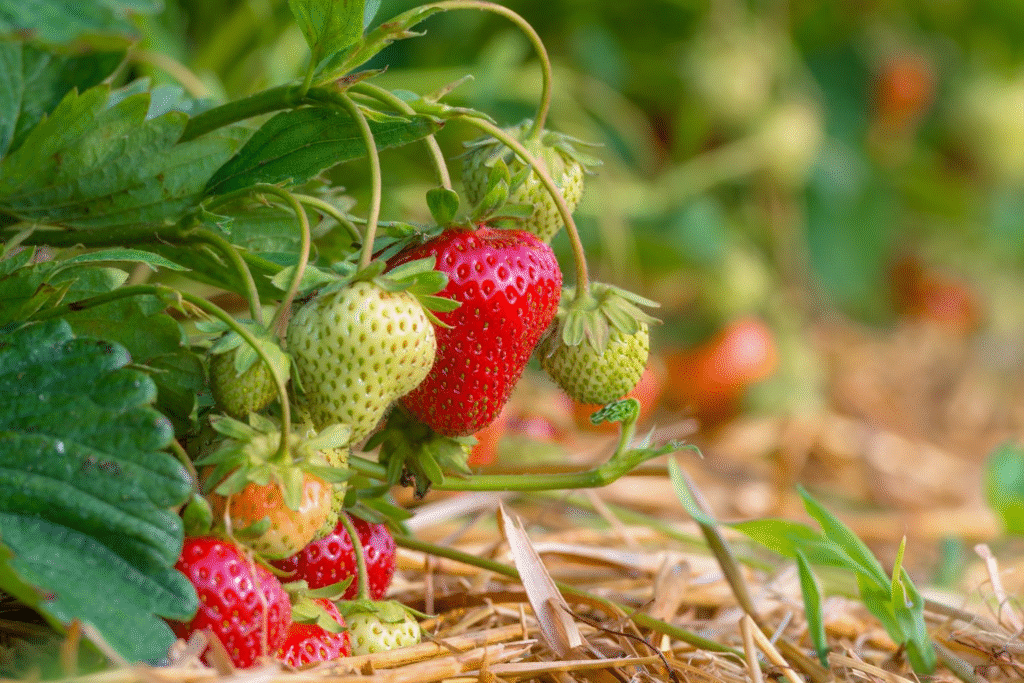
Small or Malformed Berries
Potential causes and solutions:
- Poor pollination: Plant pollinator-attracting flowers nearby
- Nutrient deficiency: Apply balanced fertilizer with micronutrients
- Heat stress: Provide afternoon shade in hot climates
- Age of plants: Replace plants every 3-4 years
Runner Management
Strawberry plants produce runners (stolons) that can become excessive:
- For maximum berry size, remove most runners
- To propagate new plants, allow some runners to root
- In matted row systems, allow runners to fill in designated areas
Conclusion
Growing strawberries at home is a rewarding experience that provides delicious, nutritious fruit at a fraction of store prices. Whether you’re growing in a traditional garden, containers, or using innovative methods, proper care and maintenance will ensure a bountiful harvest. Remember that strawberry plants typically need replacement every 3-4 years to maintain productivity, so plan accordingly.
By following the guidelines in this article, you’ll be well on your way to enjoying fresh, home-grown strawberries that far surpass anything available in stores. The satisfaction of growing your own food, combined with the unparalleled flavor of sun-ripened berries picked at their peak, makes strawberry cultivation an ideal project for any home gardener.
